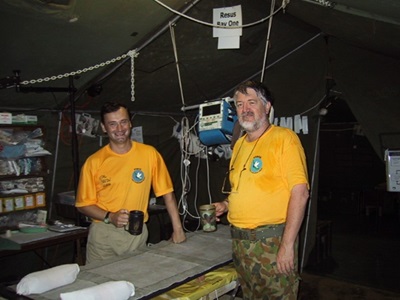2024 | Volume 25 | Issue 4
Author: Dr Glendon Farrow OAM FRACS
In 1768 Admiral Louis-Antoine de Bougainville, while circumnavigating the globe, encountered the Great Barrier Reef. Turning north towards the Solomons he “discovered” a lush tropical island and with typical Gallic flair and modesty, named it after himself. Two years later, Captain James Cook also sailed north, but inside the reef, condemning us to centuries of British cuisine.
The French say ’Boo-gainville’ The Australian pronunciation was used by Kevin Rudd. He referred to the Lodge, when Julia Gillard and the First Bloke lived there as ’Bogan-ville’.
Bougainville is the largest island in the Solomon Islands. In 1975, in yet another example of colonial boundaries being used without asking the locals, Bougainville became part of Papua New Guinea (PNG). Unsurprisingly strife followed.
In 1989 civil war erupted causing the closure of the Panguna copper mine, a major source of government income. For a decade Francis Ona and his rebels fought PNG troops who finally blockaded the island. Thousands died from preventable medical diseases and in childbirth. In 1998, an international peace monitoring group (PMG) was established. Australia provided a Logistic Support Force with a small surgical facility.
When I arrived at Kieta airstrip, the outgoing surgeon was waiting to give me a high five before going home. We both wore the canary yellow ’giggle hat‘ of the PMG. Looking like hardened military professionals was impossible. These hats were so bright even my small children refused to wear them.
Travelling by road to our base at the disused port of Loloho, we saw the jungle had been busy reclaiming destroyed infrastructure. Buildings were barely visible under a thick blanket of green vegetation.
The tented hospital facility was part of a huge tent village in an open hangar where copper ore had once been stored. The anaesthetist, David Scott, had arrived before me. As usual, he was waiting for a surgeon. Unnervingly, we looked almost identical in our yellow tee shirt and khaki shorts. I’m not sure who coined Bananas in Pyjamas, but it stuck.
The base kitchen was run by Navy cooks who served up SCRAN (stuff cooked by the Royal Australian Navy). The eating area was decorated with Navy signal flags, gaily fluttering in the breeze spelling ’BITE ME‘. Army personnel ate there oblivious to the insult. Yet another joke that went over their heads.
I did my first caesarean there. Obstructed labour would have been fatal for mother and child. Machete injuries were common, the defensive wounds of victims requiring multiple extensor tendon repairs.
Infectious diseases were everywhere, the most serious being fulminant malaria. I remember one expectant mother and unborn child dying within hours from black water fever.
On one memorable day, an infant related to Francis Ona presented short of breath. Chest X-ray showed a complete pneumothorax with midline shift. After needle thoracostomy and rapid intubation, a formal chest tube was needed. We only had adult intercostal catheters.
David and I looked at each other.
“Are you thinking what I’m thinking B1?”
“I think I am B2!”

Dr Farrow (left) and Dr Meijer (right)
We used a paediatric uncuffed endotracheal tube as an intercostal catheter. It connected perfectly to the underwater drainage system. We also had no paediatric oxygen masks.
Channelling MacGyver we made a headbox from coat hangers and clingwrap. On deployments, you had to be quick on your feet and improvise.
The anaesthetist second time around was Gerry Meijer. We still looked like bananas. A black and white shirtless ’Men of Bougainville’ calendar was produced, and I still have the photos. You know who you are.
We all remained in contact as ADF EMST instructors and at St John Ambulance. The military is like that. Deploy with someone once and you have a friend for life.